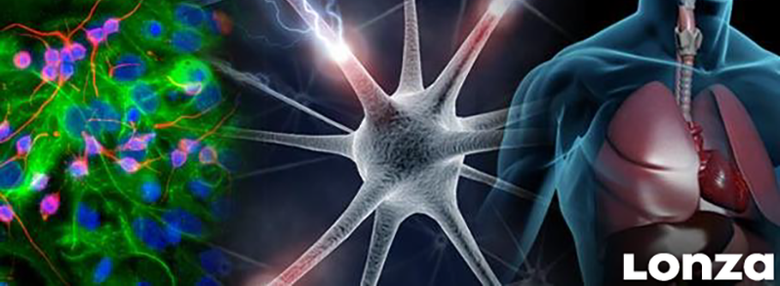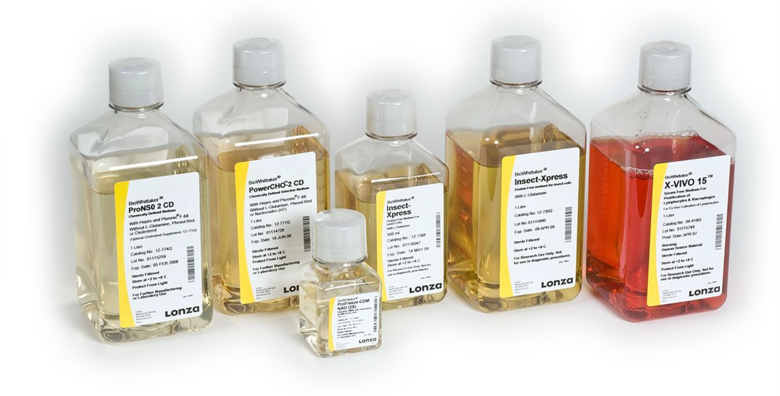
Serum-free cell culture is a cutting-edge topic in research. Find out here where the advantages of this access lie and what you should pay attention to.
THE TRADITIONAL APPROACH:
In order for cells to grow in vitro, the media must mimic in vivo conditions as much as possible. Normally, serum of different origin is added to classical culture medium. Serum is important as a source of growth factors, hormones, lipids and minerals to enhance cell adherence. Classic cell culture media such as DMEM and RPMI are usually supplemented with at least 5-10% serum.
However, the use of serum also has disadvantages. First, there is the cost factor. High quality sera tend to be expensive. Secondly, the exact composition of serum is not well defined, variability is high, and lot-specific testing is usually required. The presence of viruses, prion activity and possible cytotoxic agents is also unclear. Likewise, unwanted side effects such as stimulation and / or inhibition of cell growth or special cell functions may occur.
WHAT IS A SERUM-FREE MEDIUM?
 Basically, a distinction is made between undefined serum-free medium (SFM), which may still contain undefined plant and animal components, and chemically defined serum-free medium, where the exact composition is known.
Basically, a distinction is made between undefined serum-free medium (SFM), which may still contain undefined plant and animal components, and chemically defined serum-free medium, where the exact composition is known.
Differences are protein-free SFM, which contains no component > 10000 MW, xeno-free medium, ie without proteins of non-human origin, chemically defined SFM, ie without extracts and hydrolysates and only components of known structure and weight and ultimately NAO SFM, where all ingredients are non animal origin.
THE BENEFITS CAN BE SUMARIZED AS FOLLOWS:
SFM offers more consistency and reproducibility. The number of variables is reduced, the control of the physiological culture conditions is improved, the performance of the culture becomes more consistent and the risk of mycoplasma contamination is minimized.
The costs are reduced by the absence of serum. Downstream protein purification is simplified, and protein yield is often higher in SFM.
WHAT ELSE TO CONSIDER:
Cell weaning, adapting to serum-free conditions, will take some time, and this process can take weeks. Once done, however, batch-specific tests are unnecessary. The cells may grow more slowly and become more sensitive to stress such as shifts in pH, temperature, osmolarity, enzymatic treatments and shear forces. The effective costs of the culture are not so easy to calculate, since it is not just about the consumption of bottles. Another fact to consider is the total yield of (recombinant) protein per liter of spent medium.
There are two different approaches to weaning the cells. One method is a direct transfer, and another is sequential adaptation of the cells, either by media replacement or serum dilution. Although direct transfer saves time, it has a higher risk of losing cells. Generally, for adherent cells and suspension cultures, a cell count of at least 3x10⁵ is recommended, and adherent cultures should not be split more than 1:3.
SFM are used in cell and gene therapy as well as in the expression of recombinant proteins and antibodies at different scales. Frequently used are CHO cells, HEK 293 cells, NS0 cells and the insect cells SF2, SF9, Hi5.
WHAT PRODUCTS CAN LONZA OFFER HERE?
Media for different cells:
CHO cells: PowerFeed, eCHO, Xtreme Cho, ProCHO™, PowerCHO™ Medium
Kidney cells: ProMDCK™, UltraMDCK™, ProVero™1 and Pro293™ Medium
Insect cells: Insect-XPRESS™ Medium
Hybridoma cells: HL-1™, UltraDOMA™, UltraDOMA-PF™ and ProNS0™ Medium
Haematopoetic cells: X-VIVO™ Medium
Generally applicable SFM:
UltraCULTURE™
Synthetics Serum:
HL-1 Supplement
Freezing Medium:
TheraPEAK™ ProFreeze™ Freezing Medium
ProFreeze is a special formulation for cells that have been propagated under SF conditions, it is protein-free and NAO.

We are happy to provide you with details about the individual media, and all products can be found in our webshop.

 Deutsch
Deutsch

